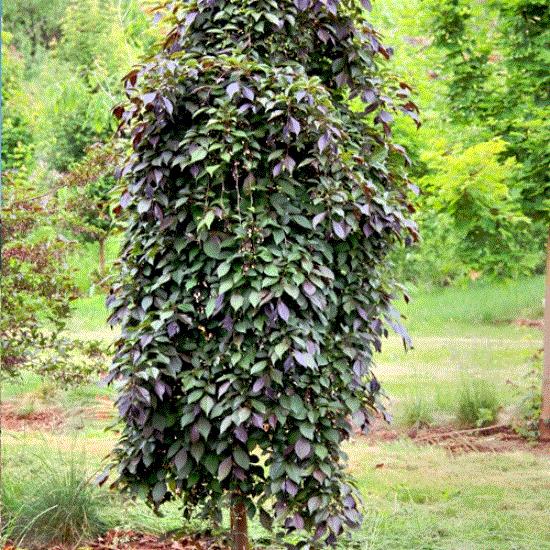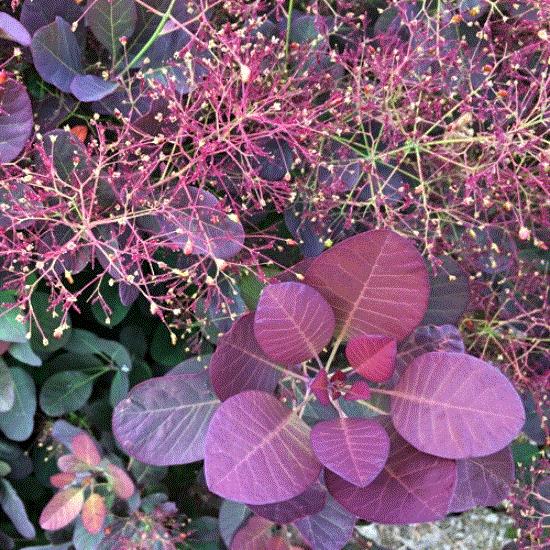2022 Census of Agriculture—Do It!
If you want to make a difference in the future of horticulture, there’s one pretty easy means of doing so. Completing the Census of Agriculture directly impacts your business by making USDA resources available to producers (particularly in times of need). But it's also directly tied to a host of funding, from youth and nutrition programs to Land-Grant University funding (training of future employees) to funding of Cooperative Extension.
As noted by National Agricultural Statistics Service Administrator Hubert Hamer, “Census of Agriculture data is widely used by federal and local governments, agribusinesses, trade associations, extension educators and many others to inform decisions about policy and farm programs and services that aid producers and rural communities. By responding to the Census of Agriculture—by being represented in these important data—producers are literally helping to shape their futures.”
Collected in service to American agriculture since 1840 and now conducted every five years by USDA’s National Agricultural Statistics Service (NASS), the Census of Agriculture tells the story and shows the value of U.S. agriculture. It highlights land use and ownership, producer characteristics, production practices, and income and expenditures, among other topics. Most importantly, data collected helps to drive the importance of horticulture to the broader agriculture industry in the U.S. and allows for equitable distribution of funds to horticulture and other specialty crops. In other words, it’s a big deal if horticulture wants equitable funding in the next Farm Bill.
To learn more about the Census of Agriculture, visit nass.usda.gov/agcensus or call (800) 727-9540. On the website, producers and other data users can access frequently asked questions, past ag census data, partner tools to help spread the word about the upcoming ag census, special study information and more. So look for mail in November of this year that will direct you to an online survey and be ready to participate.

HRI Scholarships—Due September 2!
Are you a horticulture student or do you have one on your parental payroll? If so, this is going to be of interest to you, but you better act fast—$27,000 in scholarship support is currently available through the Horticultural Research Institute (HRI) Scholarship Program for this school year.
These scholarships are made possible through endowed funds that aid students seeking a career in horticulture. HRI and these donor firms and individuals consider graduating students in horticulture to be the lifeblood of the green industry. Each scholarship has specific requirements and applications are due no later than this Friday, September 2, 2022.
-
The Timothy S. and Palmer W. Bigelow Jr. Scholarship is awarded to a student who's a resident of Connecticut, Maine, Massachusetts, New Hampshire, Rhode Island or Vermont. Up to $3,000 available.
-
The Usrey Family Scholarship is awarded to a student attending a school in California. Up to $1,000 available.
-
The Bryan A. Champion Memorial Scholarship is awarded to a student attending a school in Ohio. Up to $1,000 available.
-
The Susie & Bruce Usrey Scholarship is awarded to a student attending a school in California. Up to $500 available.
-
The Spring Meadow Scholarship is awarded to students who are interested in a career in woody plant propagation, production or breeding. Four scholarships up to $3,000 each are available.
-
The Mugget Scholarship is awarded to a student who plans to work in any aspect of the horticultural industry. Up to $1,500 available.
-
The Carville M. Akehurst Memorial Scholarship is awarded to a student who's a resident of Maryland, Virginia or West Virginia. Up to $5,000 available.
-
The Gunter Mecking Memorial Scholarship is awarded to a student who plans to work in any aspect of the horticultural industry. Up to $1,000 available.
-
The Wright Family of Alabama Scholarship is awarded to a horticultural student, with preference given to students studying or pursuing careers in ornamental greenhouse production. Up to $2,000 available.
More information about the scholarship requirements, along with the online application, can be found at www.hriresearch.org/scholarship-application-and-resources.

Green Career Week
It’s been a while since I mentioned a significant and impactful effort underway across North America called Seed Your Future. If you’ve yet to hear about it, Seed Your Future aims to educate youth and early career professionals on the importance of plants and the people who work in the art, science, technology and business of horticulture.
Why, you may ask? Well, there's been a decline in interest in plants and in pursuing careers in horticulture. This has caused many challenges, including: low appreciation for how plants impact the world; declining college, university and certification program enrollment in horticulture; and plant blindness (the inability to see or notice the plants in one's own environment, leading to the inability to recognize the importance of plants in the biosphere and in human affairs). We're also challenged by negative stereotypes about careers working with plants.
Now here comes your opportunity to change our industry’s trajectory by participating in Green Career Week (October 3-7, 2022). Seed Your Future created Green Career Week to help YOU reach the next generation of professionals. Green Career Week is a national campaign led by industry professionals like you to increase awareness about green industry careers and help build relationships with local high schools.

During Green Career Week, participating businesses and organizations will connect with local high schools to showcase the various career paths at their business. Of course, you can reach out to schools anytime during the year—and we encourage you to do that—but by working together during a designated week, we can give the industry a louder voice.
If you're interested in participating, check out the details here. And if you do host an event, send pictures!

AmericanHort Women in Horticulture Seminar
On September 29, AmericanHort is continuing their commitment to highlighting the vital role that women play in the green industry with a seminar from Summer Field, propagation manager at Spring Meadow Nursery. Born and raised in northern Illinois, Summer’s passion for horticulture is a result of taking various high school agriculture-related courses, being a member of The National FFA Organization, and attending horticulture and floriculture judging competitions.

Summer gained her first industry experience by working at one of the top Japanese gardens in the United States. She then gained greenhouse work experience working as a greenhouse attendant at a nursery in northern Illinois. After graduating from Southern Illinois-Carbondale, Summer joined Spring Meadow Nursery as an assistant propagation manager.
In this interview, you'll learn more about Summer's journey in horticulture, discuss how mentors have helped her along the way and how she hopes to mentor others entering the industry. It should be an excellent session not only for young women, but also a reminder to us seasoned veterans of the green industry on the importance of mentoring a historically under-represented demographic in our profession.

Farwest Peoples’ Choice Winner
Sometimes (albeit not too often), I pull a rabbit out of the hat and pick a winner. Such was the case back in the May 27 newsletter when I did a bit of gushing over Nightfall Snowbell, a new introduction from J. Frank Schmidt. It seems I wasn't alone in praising this new cultivar, as it was chosen by voting attendees as the People’s Choice winner in the 2022 Farwest Show’s New Varieties Showcase.
That makes it a sweep for the introduction from J. Frank Schmidt & Son Co., which also won the New Varieties Showcase Best in Show award from Farwest’s professional judges. It also won a Retailer’s Choice Award at the show.

Nightfall Snowbell was one of 61 outstanding new selections on display at the 2021 Farwest Show and available from at least one show exhibitor. It was bred by Oregon Nurseries’ Hall of Fame member Keith Warren for JFS, which is based in Boring, Oregon.
“The many great attributes of this weeping tree caught the attention of our attendees and judges alike,” said Heather Cyrus, event and education manager for the Oregon Association of Nurseries, which produces the show.
Nightfall Snowbell combines the deep purple foliage of Evening Light Snowbell with the gratefully weeping form of greenleafed cultivars such as Fragrant Fountain. It features purple emerging leaves with green undertones, which contrast with pearly white flower buds in spring. They open to reveal creamy white, bell-shaped blooms. The leaves darken as the season continues. It's available from J. Frank Schmidt & Son Co. as #10 containers and multiple bare root sizes.

Velveteeny Smokebush
Also scoring a People’s Choice win at the Farwest Show was Velveteeny Smokebush (Cotinus coggygria), introduced by Sidhu & Sons Nursery. This cultivar, a brand-new introduction, is a compact selection (4- to 5-ft. rounded deciduous shrub) half the size of its maternal parent (Royal Purple) with the same beautiful, rich purple foliage. Its size makes it ideal for patio planters and small spaces in yards, yet it propagates and finishes well in containers despite its small stature.

Hardy from Zones 4 to 8, it can tolerate a wide range of soil types (and soil pH) and does quite well in dry spots, dropping foliage only when it gets excessively dry late in the season. In Zones 4 to 6, it’s well suited for full sun, but in the southern reaches of its range I recommend some afternoon shade to keep it happy. Too much shade, however, will result in a slight greening of foliage, so I’d avoid consistently shady locations unless you're set on this species but only have a shady spot to locate it.
Oh, and deer will absolutely avoid this, unless they've already consumed just about everything else in the landscape. If that’s the case, my condolences.
FYI—All of the New Varieties Showcase selections are viewable at farwestshow.com/new-varieties-showcase.

Our Wacky Wonderful World—Notes from the Edge of Sanity
Will there be a great migration of agriculture (including nursery crop production) in the U.S. due to persistent or cyclical severe droughts?
It seems like this is a question I hear almost every year over my 15-year career as a university professor and consultant, with a different region the focus of the question (and drought) annually. Of course, this is a common curiosity with regard to California. This year, it’s Texas into Oklahoma and parts of Arkansas/Kansas (in addition to California). Last year it was pretty much everywhere west of the Rockies. In 2020, the four-corners region suffered from a significant lack of rainfall. But then there are years like 2019, when everyone was content and short-term memory loss set in. I can’t blame them, as I can’t remember what I ate for lunch yesterday.
The fact of the matter is that drought is inevitable, as is persistent or rapid-cyclical drought. And no one can answer that initial question simply, as it's an extremely complex long-term issue that will require long-term solutions. One resource, tailored to our industry that I think we should all read periodically is “The Next Ten Years: Strategic Vision of Water Resources for Nursery Producers” written by my colleagues and friends, including Drs. Amy Fulcher (University of Tennessee), Anthony LeBude (NC State University), Jim Owen (USDA-ARS), Sarah White (Clemson University) and Richard Beeson (University of Florida). You would be well-suited to pay attention to these scholars' current research, as well.
Although this manuscript was published in 2016, nearly all of the points are just as valid (and pressing) today as the day it was published, particularly the statement, “Even if solutions to conserve water are available, they will not be broadly adopted until water quantity or quality has an immediate negative economic impact or access to water is threatened through litigation, changes in regulations or climate. Only then will research-based water conservation practices be sought on a widespread basis.”
There's a harsh authenticity to that statement, but given the mindset I've seen over the last 15 years across governments (from local to national) and businesses alike, it’s also a reality. So my answer is a bit cynical. There will one day be a migration of not only horticulture, but agriculture (and populations) as a whole in North America. It will likely happen only when the faucet runs dry, which will eventually happen in parts of North America (likely in this century). And if you think that can’t happen in a developed nation, sooner or later Mother Nature is going to present us all with a “hold-my-beer” moment resembling the Great Dust Bowl.
The question at this point is simple: What are you going to do about it? The answer should also be simple—educate yourself, your customers and plan accordingly by making incremental changes to preserve the resources we have. The alternative to short-term pain in gradually changing practices is going to be long-term regional, agricultural (and community) devastation when the tap runs dry.


Live authentic,

Matthew Chappell
Editor-at-Large
Nursery & Landscape Insider
This has been received by 31,848 of the hardest-working horticulturists in show business!
If you're interested in reaching 31,848 clients who eagerly await every Nursery & Landscape Insider and surely read every word, contact Kim Brown ASAP and she'll hook you up.